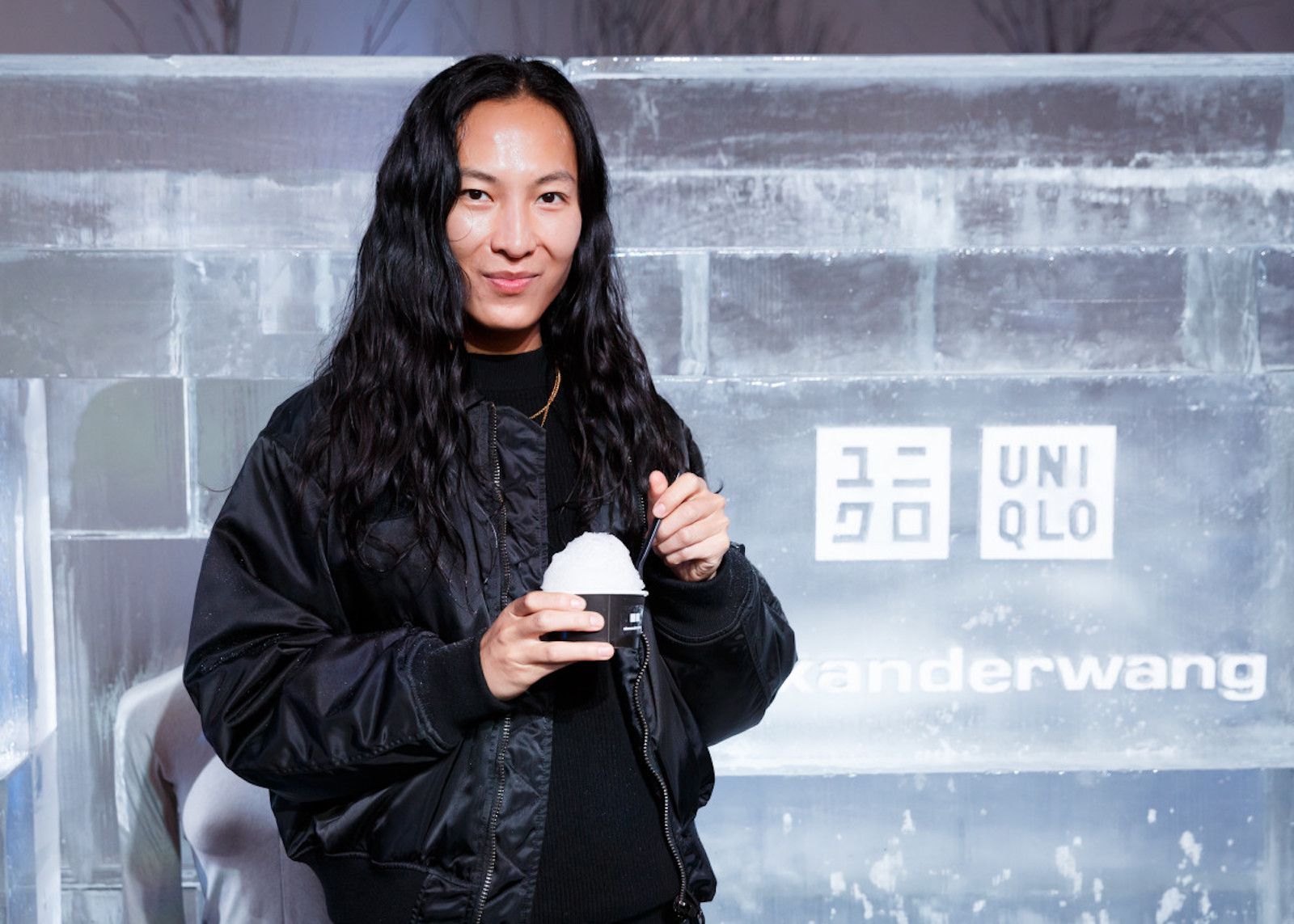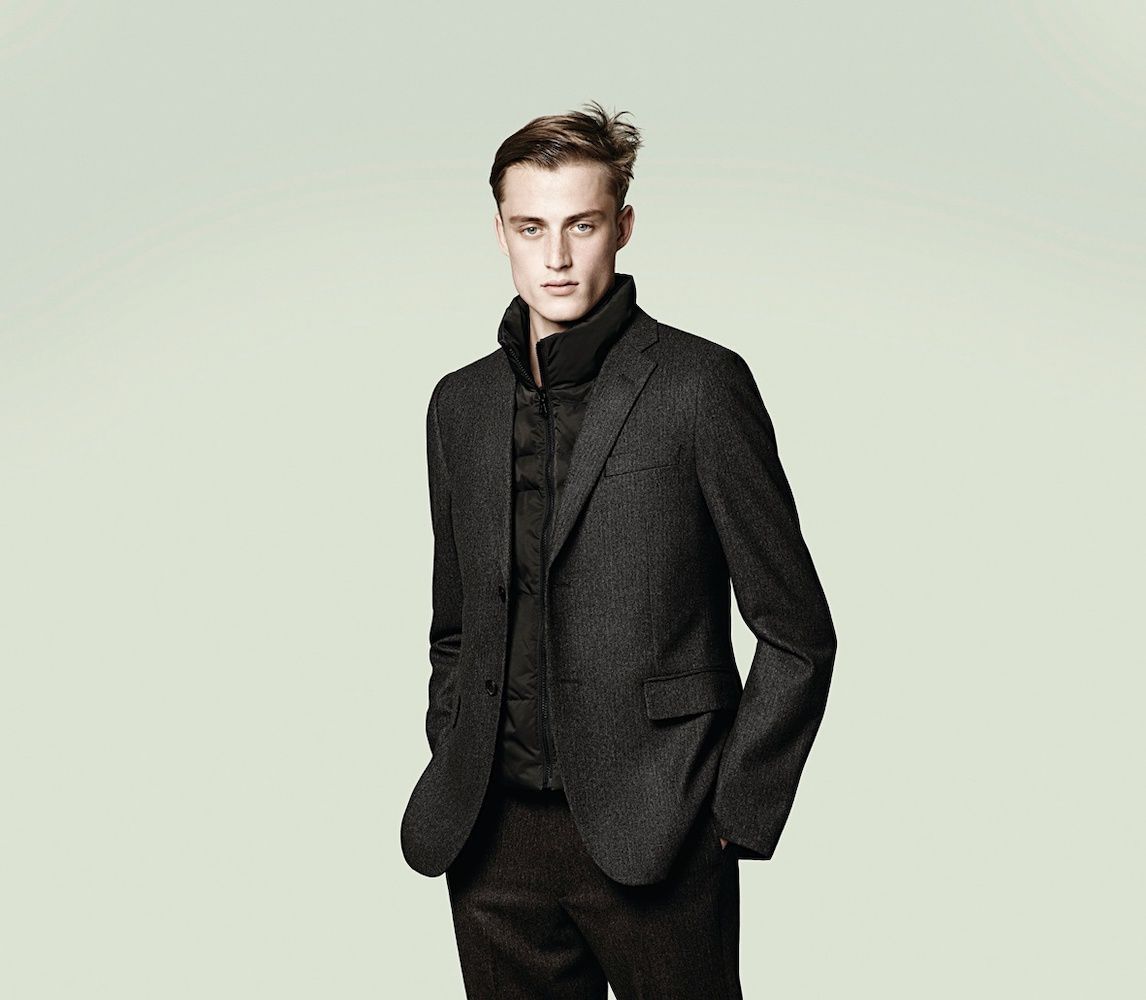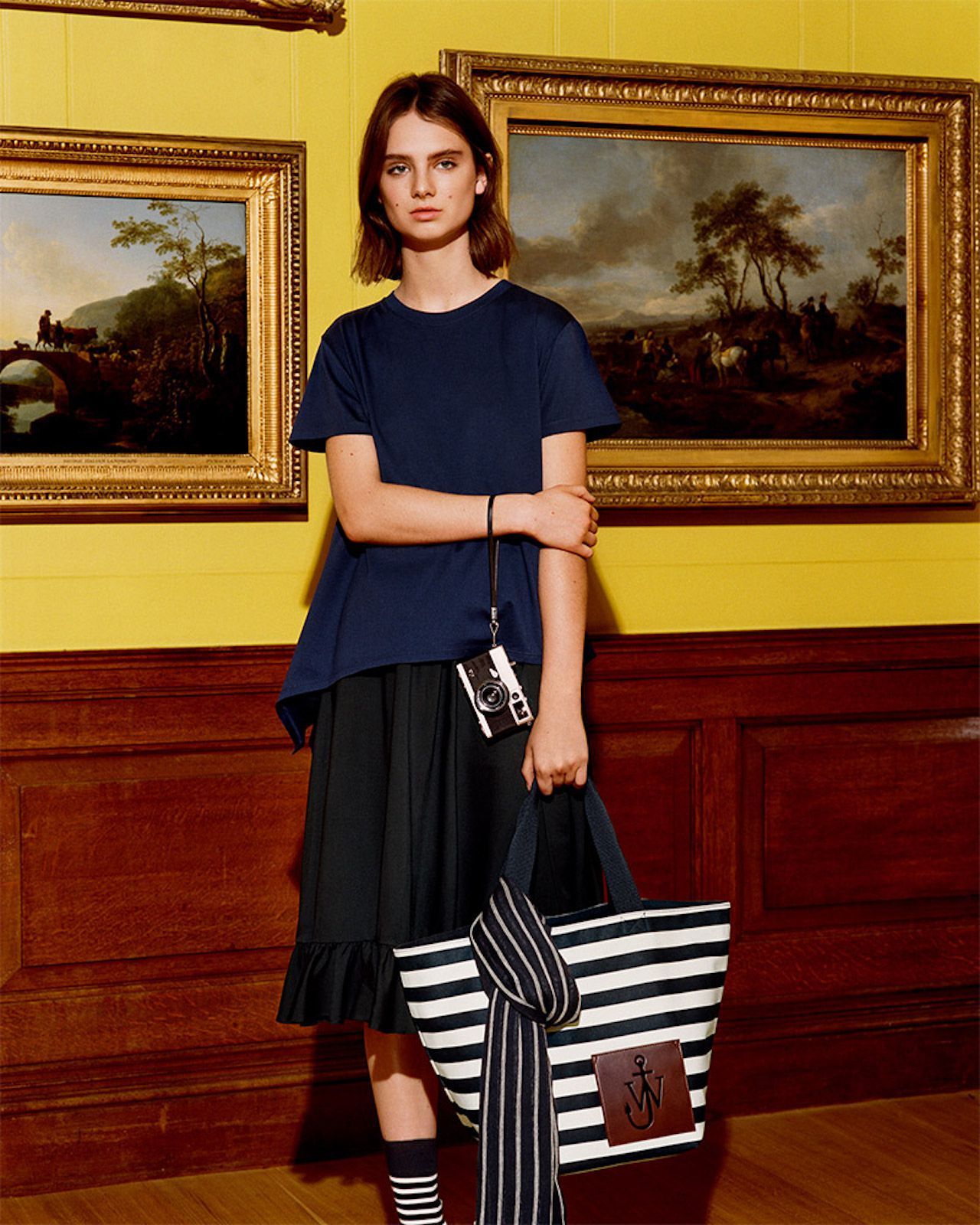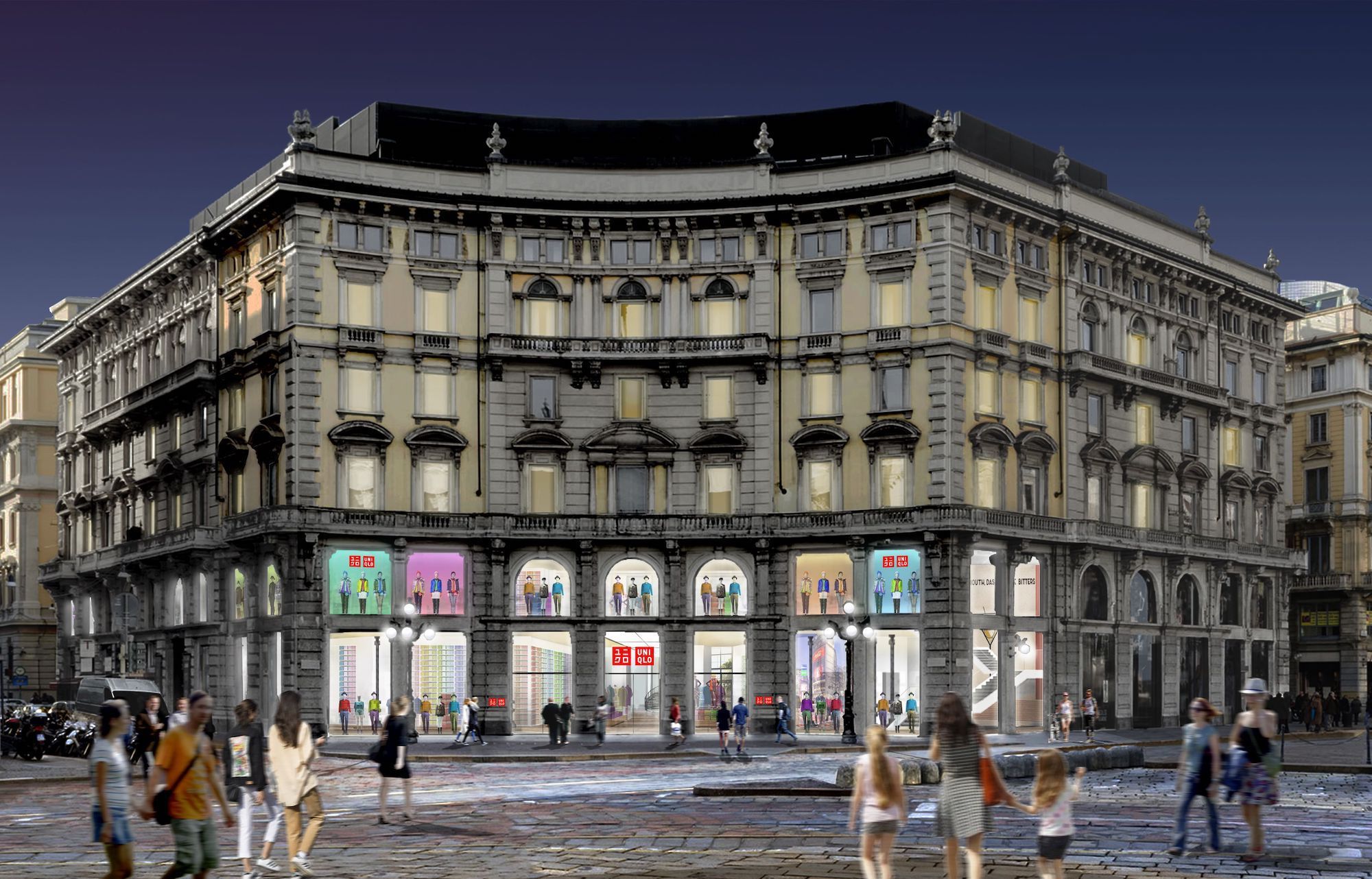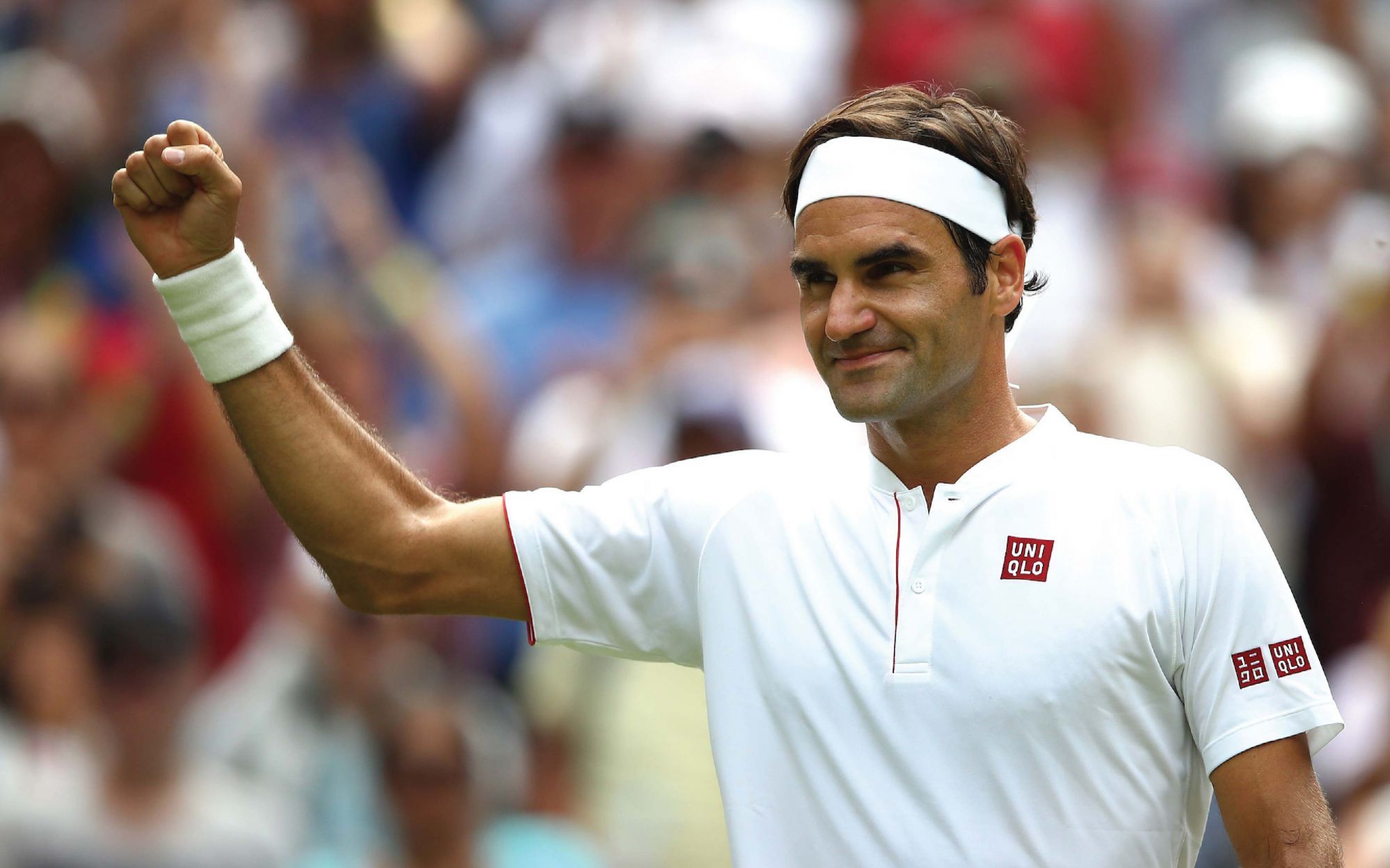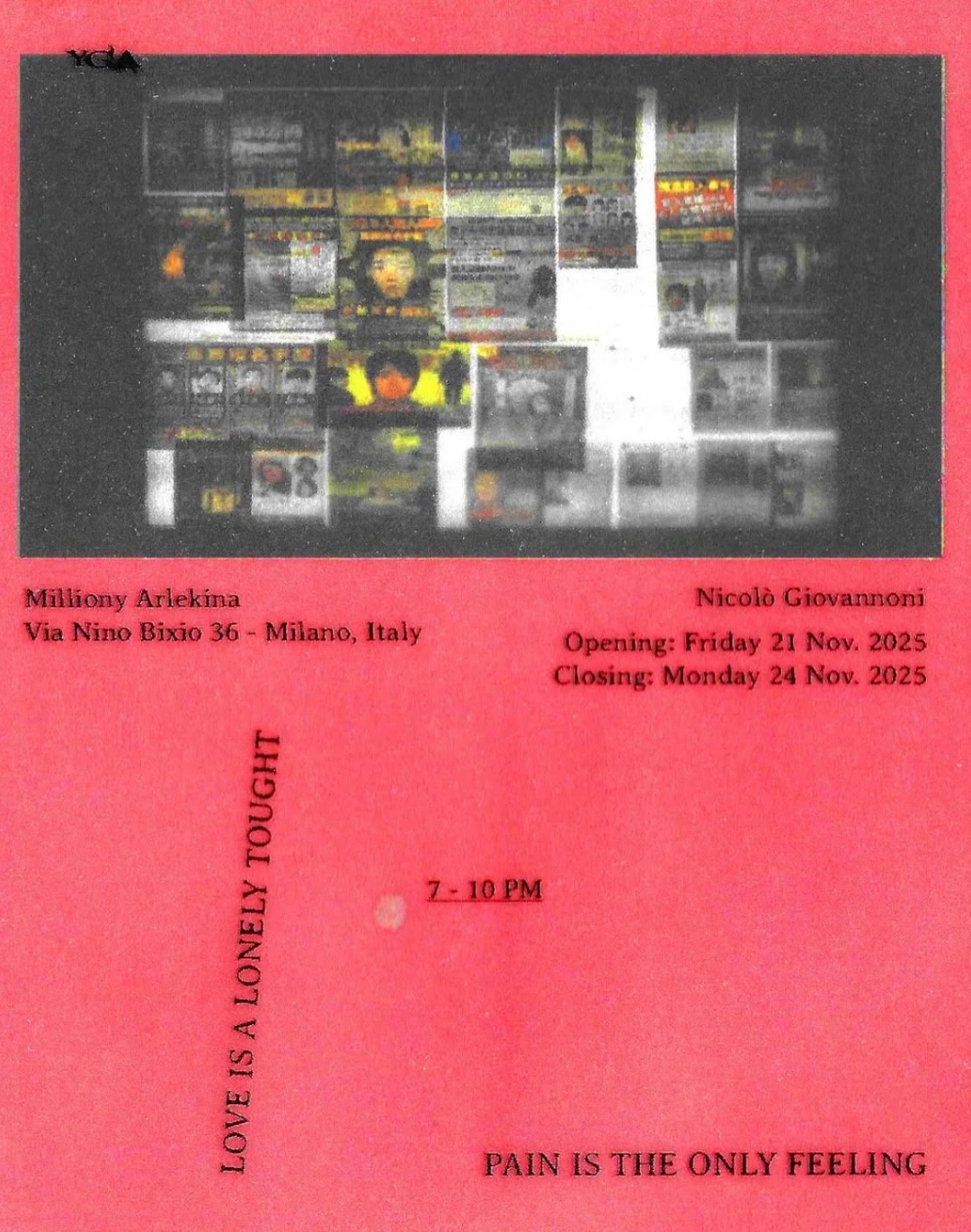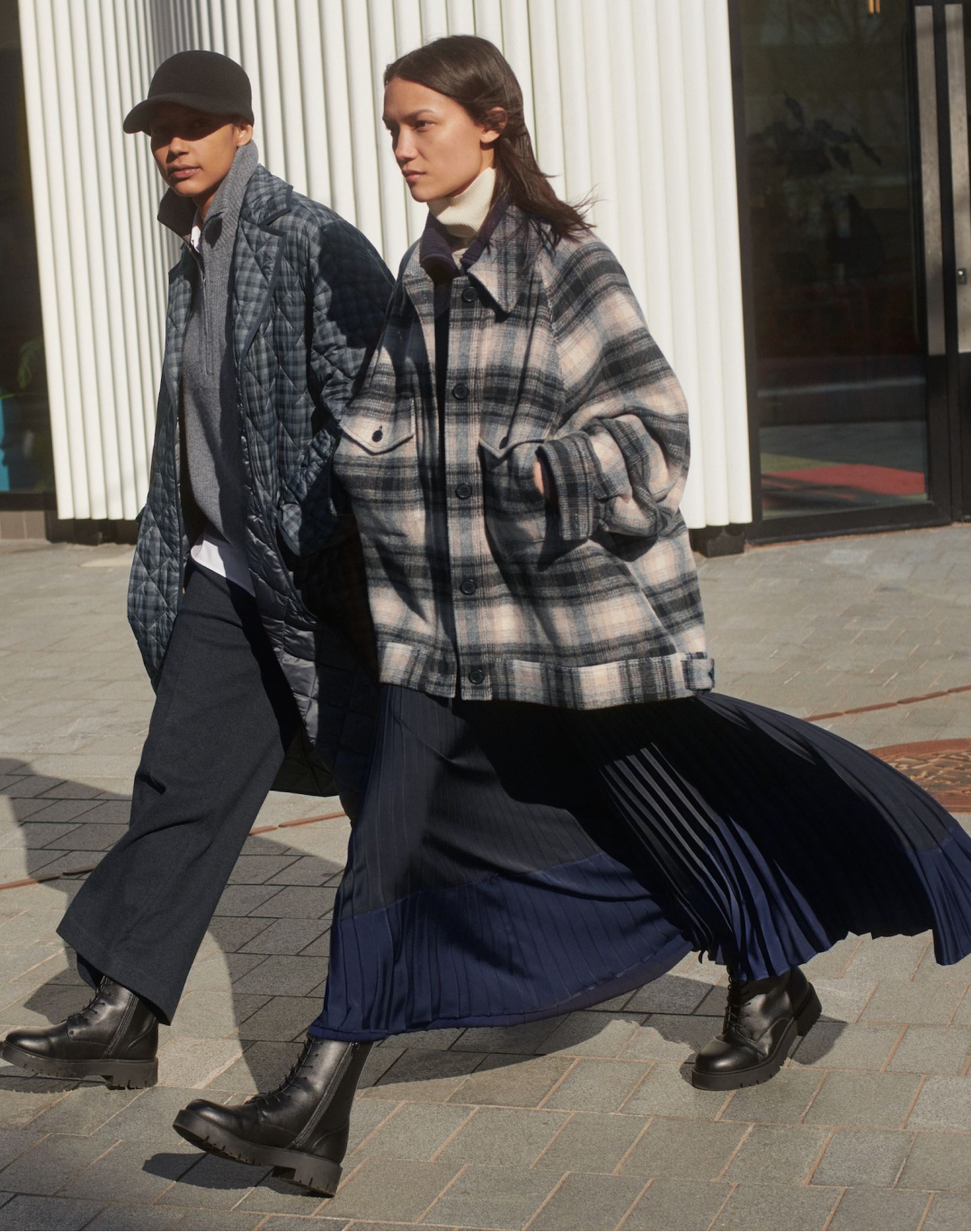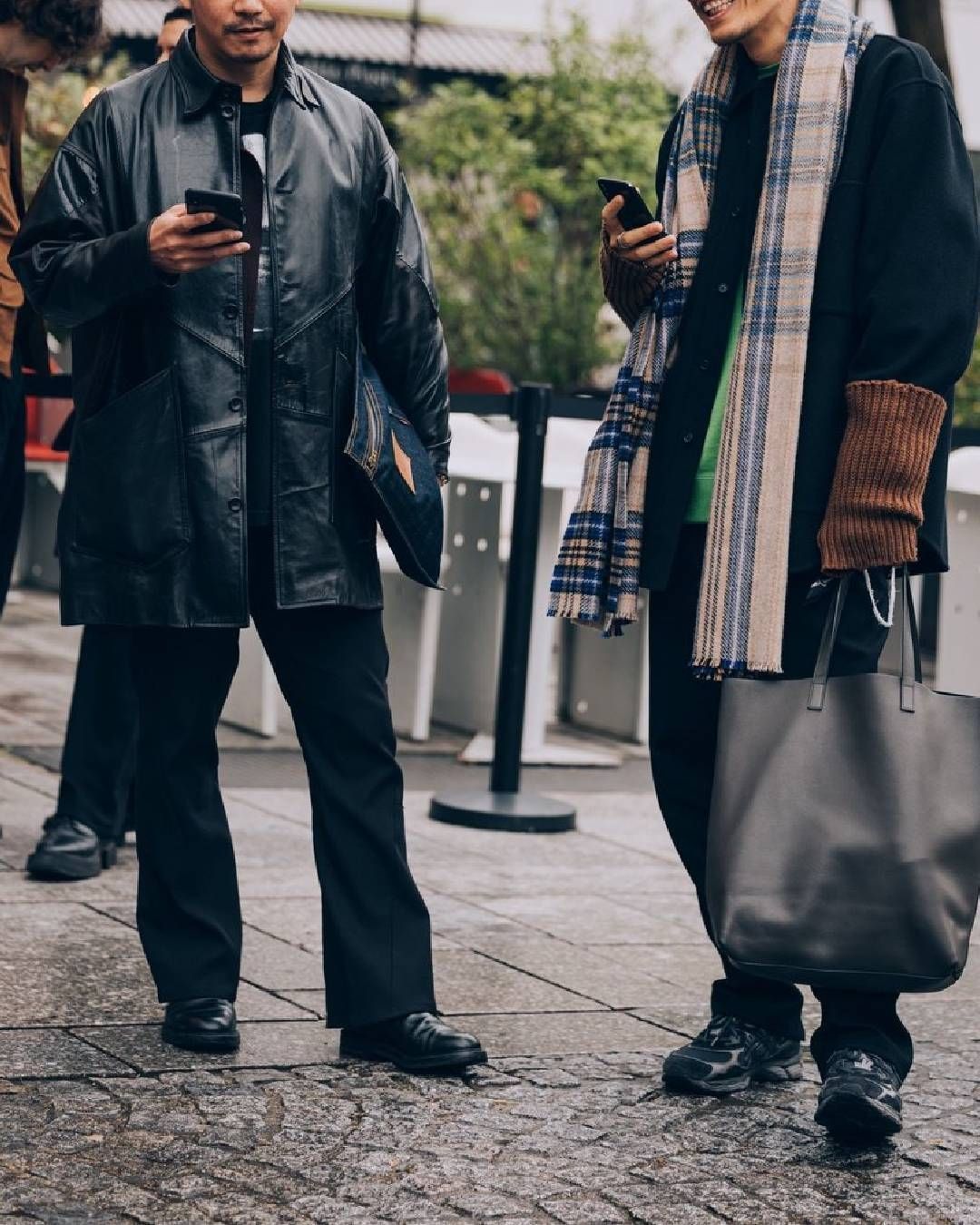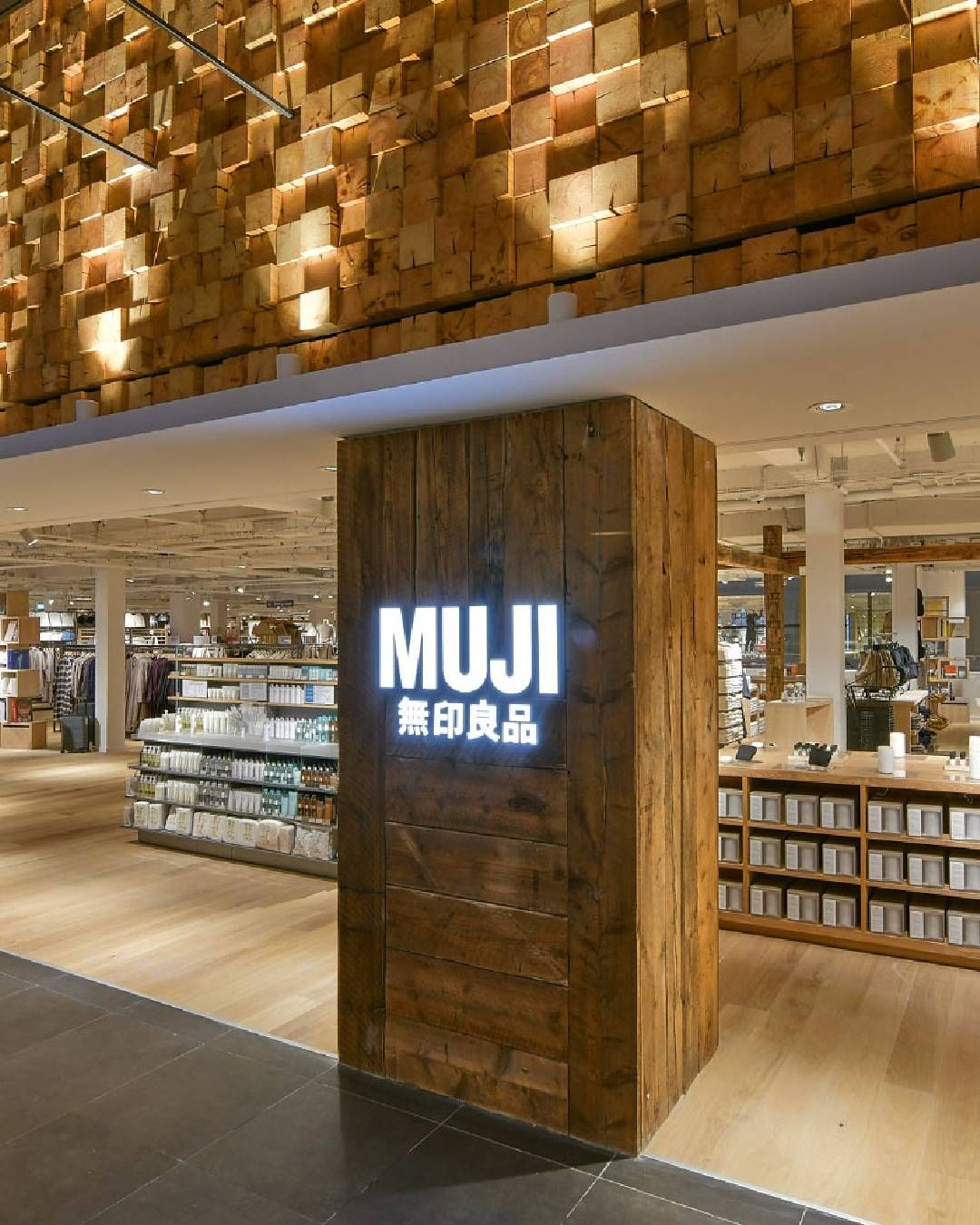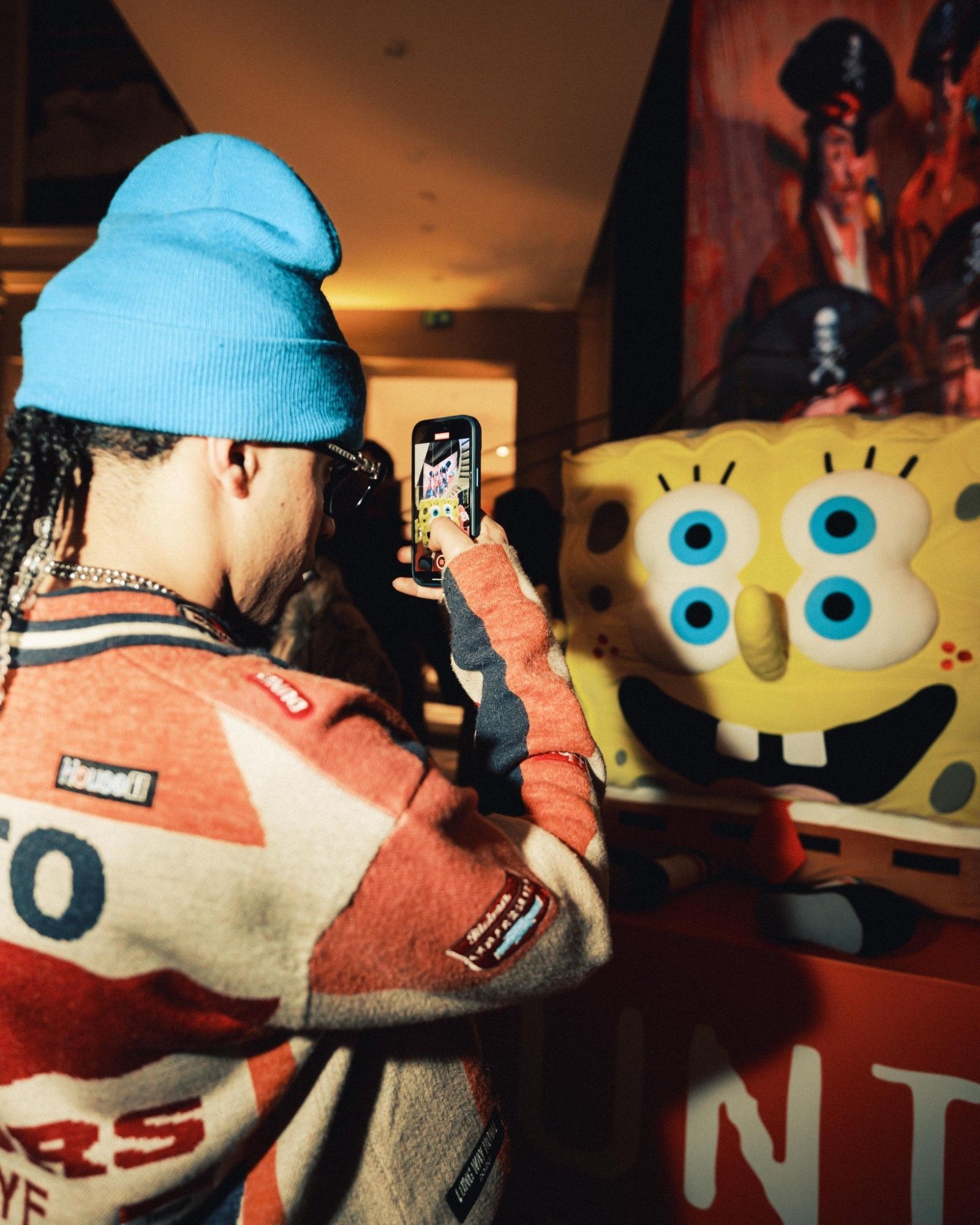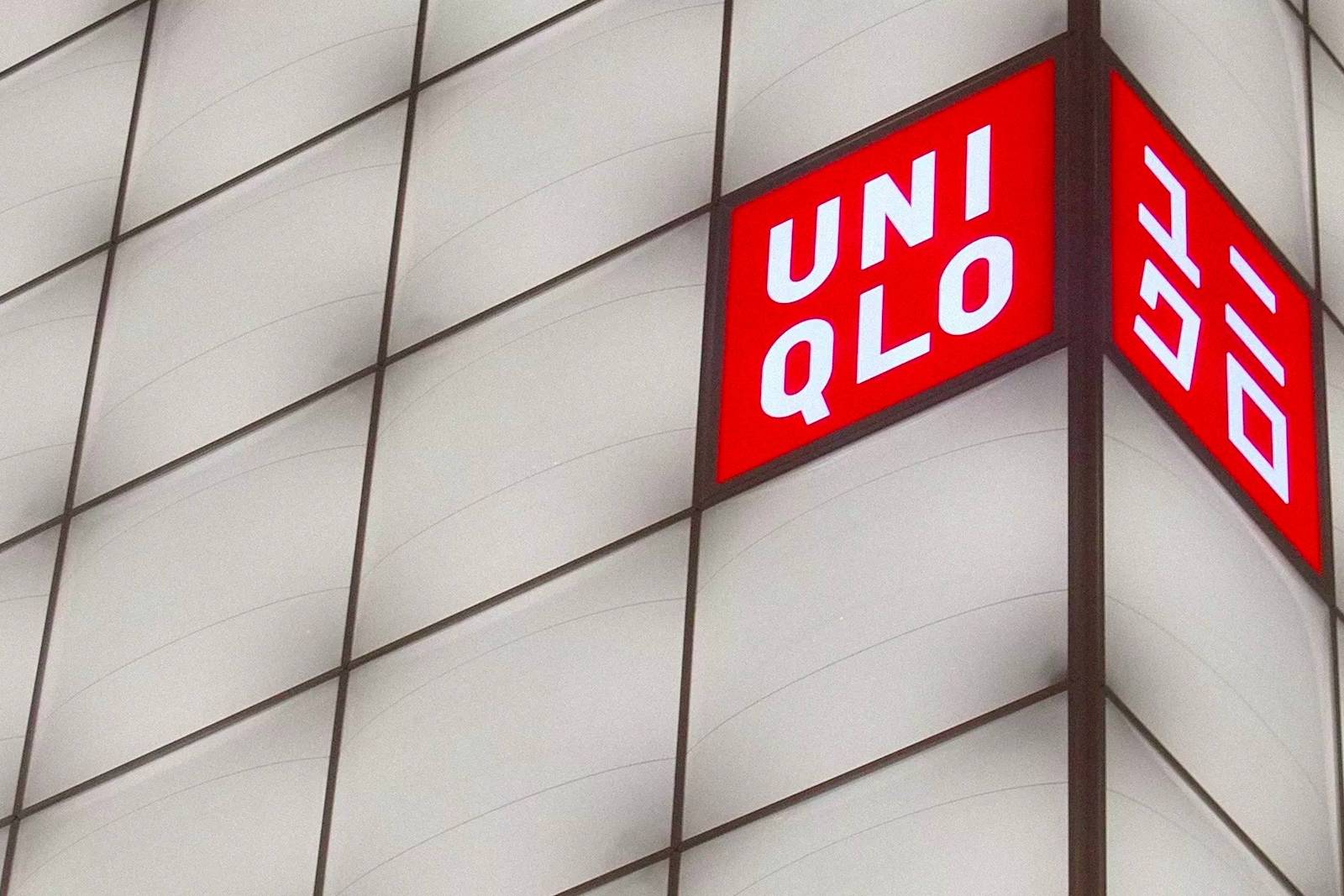
The UNIQLO's LifeWear Japanese aesthetics that inspired artists like KAWS, Jil Sander and JW Anderson
"Form follows function"
Almost a century after its theorization by the school of modernist design and architectural functionalism, this simple slogan by Louis Sullivan could perfectly describe the approach to the world of fashion carried out for 35 years by the Japanese brand UNIQLO.
In a historical moment in which we witness overcrowding of logos, a simple and minimal style lightens the landscape saturated with collections, capsule collections, drops, and collaborations, bringing design back to a more elementary level, thanks to blocks of color, geometries and a natural adaptation to the body. For UNIQLO all this takes the name of LifeWear, a term that with incredible effectiveness manages to condense the way of understanding the fashion of UNIQLO, which has its roots in the Japanese values of simplicity and longevity, in addition to that idea of the perfectly proportioned product and harmonious. LifeWear is a way to challenge the common concept of consumerism, far from what other big retailers like Zara and H&M propose. In fact, the philosophy of UNIQLO is to create garments for the widest range of consumers, looking at concrete needs, at a high-quality standard, keeping an affordable price and above all the total disinterest in the current trends, to reduce the modern idea of disposable fashion. Since 1984, the 15 countries of the world have had about 2000 stores, the last of which will open in Copenhagen and Milan next September.
"Unique Clothing"
Tadashi Yanai, a former operator employed in retailing in Yamaguchi, understood the new economic potential of Japan in the early 1980s, approaching his business with the economic bases imported from the United States, combined with an emphasis on functionality and minimalism. In 1984 Tadashi Yanai (then 35) decided to open Hiroshima Unique Clothing Warehouse, his first unisex casual clothing store.
At the time of registering the trademark in 1988, the Tokyo patents office made the decisive but decisive transcription error, changing C into Q and transforming Yanai's business into UNIQLO, a distortion of "Unique" and "Clothing ". That idea of fashion that can be broken down into single and simple elements convinced the common taste, also thanks to an ironic approach that is also captured in the name, calling basic and essential products "unique" tells a lot about how UNIQLO is since its first days much more than a clothing brand, but a philosophy described by the term LifeWear.
Fast Retailing Ltd. controlled the company while Tadashi Yanai - now 70 years old and richest man in Japan - studied European and American economic models, in particular, that of Gap, which merged the clothing of the private internal brand with a robust sales activity at the detail.
In the second half of the 1990s, at a time of recession in Japan, the brand was able to invest in low-cost production in China, guaranteeing high levels of quality, offering cheap products aimed at a wide range of public, the Yanai's entrepreneurial intuition led him to understand many of the market trends in advance. The stores in Japan increased, including one in Harajuku, the Tokyo fashion quarter, which projected the brand towards a leading role, with 500 stores at home and the opening of the first overseas in 2001, in London.
From this moment the attention towards UNIQLO grew more and more and to the English store were added those of New York, Paris, Moscow, as well as collaborations with high fashion designers like Jil Sanders, who have always made the minimal style contained the principle aesthetic of their collections.
The path to complete the four fashion capitals will end on September 13, 2019, the day on which the 3-storey store, the first in Italy, will be inaugurated in Piazza Cordusio in Milan.
If the evidence and extravagance seem for many designers the surest means by which to be noticed, UNIQLO's approach continues to be that of anonymity, which in this perspective becomes courage and consistency with respect to one's own concept of taste.
In 2006 Fast Retailing entered into a strategic partnership with Toray Industries, a Japanese textile company specialized in industrial products focused on synthetic chemical technologies, hence the technology for HeatTech, AIRism. UNIQLO in fact does not just limit itself to making white t-shirts at a good price, but in recent years has presented projects to reduce production waste and the functionality of its garments, investing in technology in an unusual way compared to other fast fashion realities like Zara and H&M.
Another aspect that opened the brand to the outside in a decisive way were the collaborations, to name just a few names: Alexander Wang, Andy Warhol, Jean-Michel Basquiat, Keith Haring, Tomas Maier, Inès de la Fressange, JW Anderson, Carine Roitfeld or Cristophe Lemaire, who still designs the UNIQLO U line in the Paris atelier.
This opening towards western culture and the close partnership with Roger Federer have meant that in 2018 foreign sales exceeded those in Japan for the first time.
The UT collection
Among the many creatives who have worked with the Tadashi Yanai brand is another prominent Japanese street fashion personality, Tomoaki Nagao, better known as NIGO and founder of BAPE. NIGO currently works as creative director for the UNIQLO UT line. In this series, some icons of pop culture such as Pharrell (a great friend of NIGO), Peanuts, Disney, Marvel, Shonen Jump and the artist KAWS have used the bases of UNIQLO to express their own creativity, a small concession with respect to traditional garments basic.
The UT collection is designed to partially overcome that barrier of apparent anonymity, creating a bridge between creativity and the singularity of consumers, which is why the most evident aspect is the variety of proposals and collaborations. The UT line is also a way to export some of the funniest or iconic Japanese pop symbols, not surprisingly the last three drops have involved Pikachu and the world of manga/anime.
The collaboration with the American street artist KAWS remains, however, the one that has had more resonance in these years, transforming the tee into a true cult object, sold to resell with prices increased by more than twice the retail value. The new Summer collaboration between the street artist and the Japanese brand will be launched in Italy on June 6th at 8 am.











































